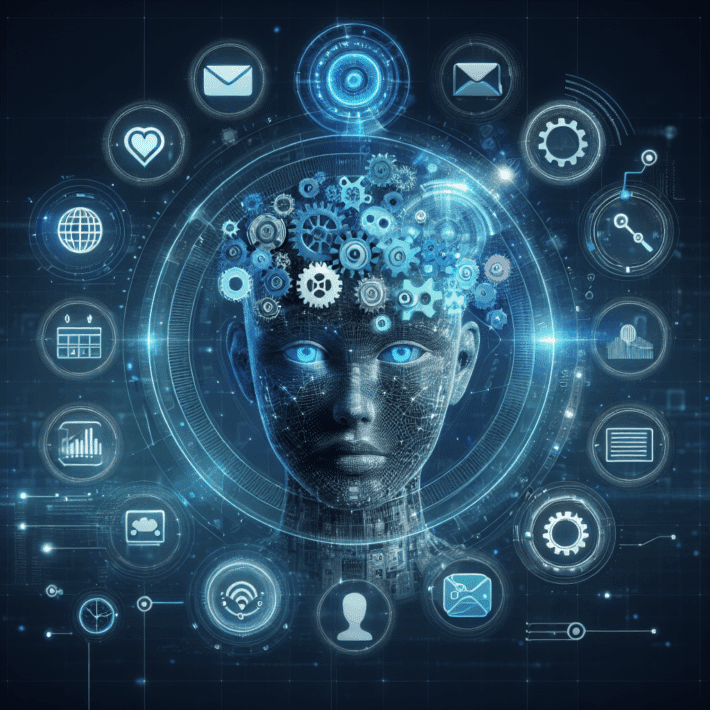AI’s Looming Takeover: Will 40% of Jobs Be Impacted in the Next Decade?


AI isn’t just knocking at the door—it’s kicking it down.
Artificial intelligence (AI) is not just the shiny buzzword—it’s a freight train hurtling toward the global workforce. AI could potentially impact 40% of jobs worldwide over the next ten years. That’s nearly half of all jobs on this planet! Whether you’re a coder, a factory worker, or even a journalist like yours truly, AI isn’t just knocking at the door—it’s kicking it down.
How AI Will Reshape Jobs
The UNCTAD report breaks down AI’s impact on jobs into four main categories:
Replacement: This is the scary one—AI swooping in and outright replacing human workers. Think self-checkout kiosks but on steroids.
Complementation: In some cases, AI won’t replace humans but will work alongside them to enhance productivity. Imagine AI-powered tools helping doctors diagnose diseases faster.
Deepening Automation: This involves taking existing automated systems and making them even smarter and more efficient. Goodbye repetitive tasks; hello streamlined workflows.
Job Creation: It’s not all doom and gloom—AI could also create new roles, particularly in fields like AI research, development, and maintenance (1) (2).
But here’s the kicker: while AI might boost overall productivity, it’s also likely to displace millions of workers, especially in industries reliant on low-cost labor. Developing countries that have long depended on their competitive edge in cheap labor could find themselves at a serious disadvantage as automation deepens.
The Concentration of Power in AI
If you think this AI revolution is going to be a free-for-all where everyone benefits equally, think again. The report highlights that just 100 companies—mostly based in the United States and China—account for nearly half of global investment in AI research and development. These tech giants include familiar names like Apple, NVIDIA, Microsoft, Amazon, and Alphabet (Google’s parent company). Together, their market value rivals entire continents’ economies—yes, you read that right. Apple alone has a market value comparable to Africa’s GDP.
This concentration of power raises serious concerns about widening technological divides between nations. While developed countries race ahead with cutting-edge AI applications, many developing nations risk being left behind entirely. The UNCTAD report warns that 118 countries—mostly from the Global South—are missing from critical conversations about governing AI.
The Global Divide: Winners vs. Losers
Let’s talk winners and losers for a second. The United States dominates digital technologies like big data, blockchain, and 3D printing, while China leads in 5G networks, drones, and solar photovoltaics. Meanwhile, Japan and South Korea are making strides in robotics and nanotechnologies.
But what about everyone else? Developing nations often lack the infrastructure—like reliable internet connections or high-quality datasets—to fully leverage AI technologies. Without significant investment in education systems that teach digital skills or shared global facilities to distribute AI tools equitably, these countries risk falling further behind.
AI's Impact on Skilled Jobs
Here’s where things get really interesting—and slightly terrifying. Unlike previous automation technologies that were limited to routine tasks (think assembly lines), modern AI systems can tackle highly skilled jobs. From analyzing complex data sets to performing intricate surgeries with robotic precision, AI is proving it can outperform humans in certain areas.
But don’t start panicking just yet; there’s still hope for us mere mortals. The interplay between automation (machines doing it all), augmentation (machines helping humans), and new job creation will ultimately determine how much damage—or opportunity—AI brings to the labor force.
What Needs to Be Done?
UNCTAD Secretary-General Rebeca Grynspan has called for stronger international cooperation to ensure that this technological revolution benefits people—not just corporations or nations with deep pockets. The report suggests creating a shared global facility where countries can access AI tools and computing power equitably.
Additionally, developing nations need to focus on building robust internet infrastructure and training their populations in digital skills to stay competitive in this rapidly evolving landscape.
The $4.8 Trillion Question
By 2033, AI is expected to generate a jaw-dropping $4.8 trillion (€4.38 trillion) in market value—but who gets the biggest slice of this pie? So far, it looks like the usual suspects: tech giants headquartered in Silicon Valley or Beijing. If we don’t address these disparities now, we risk creating an even more polarized world where technological haves and have-nots are separated by an unbridgeable chasm.
Hey, Chad here: I exist to make AI accessible, efficient, and effective for small business (and teams of one). Always focused on practical AI that's easy to implement, cost-effective, and adaptable to your business challenges. Ask me about anything; I promise to get back to you.


So basically if you’re not working for Apple or Google by 2035, you’re toast? Cool cool cool… 🙄